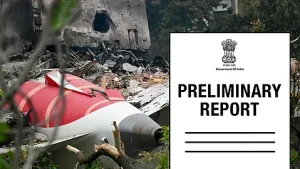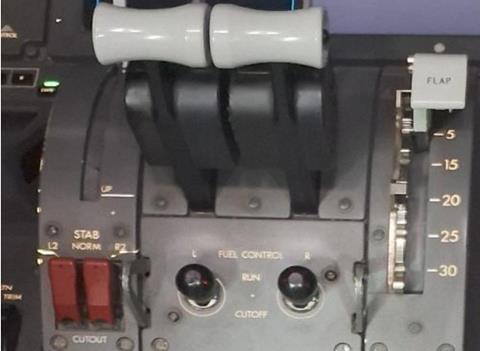New Delhi – The Directorate General of Civil Aviation (DGCA) has issued mandatory inspection orders for Boeing aircraft following the devastating Air India Flight 171 crash. The DGCA On Air India Crash Report response demonstrates unprecedented urgency in addressing potential fuel system vulnerabilities that contributed to India’s worst single-aircraft aviation disaster.
Immediate Inspection Mandate Following Crash Investigation

The DGCA On Air India Crash Report action requires airlines to inspect fuel switch locking mechanisms on all Boeing 787 and 737 aircraft by July 21. This directive follows the Aircraft Accident Investigation Bureau’s preliminary findings that identified fuel cutoff to both engines as the primary cause of the disaster that claimed 260 lives.
“All air operators of the affected aircraft are hereby advised to complete the inspection required under SAIB Number NM-18-33, dated 17th December 2018, no later than 21st July 2025,” stated the Directorate General of Civil Aviation’s advisory.
The DGCA On Air India Crash Report timeline emphasizes strict adherence to ensure continued airworthiness and operational safety across India’s aviation sector. This mandatory inspection affects approximately 150 Boeing 737 and 787 aircraft operated by Indian airlines, including Air India’s fleet of 33 Boeing 787s.
Critical Findings from AAIB Preliminary Report


The DGCA On Air India Crash Report response stems from disturbing findings in the 15-page AAIB preliminary report. Flight data recorder analysis revealed that both fuel control switches moved to the “cutoff” position moments after takeoff, triggering catastrophic engine failure.
“At about 08:08:42 UTC and immediately thereafter, the engine 1 and engine 2 fuel cutoff switches transitioned from RUN to CUTOFF position one after another with a time gap of 01 sec,” the report detailed.
Cockpit voice recordings captured in the DGCA On Air India Crash Report investigation revealed confusion among pilots, with one asking why fuel was cut off and the other responding that he did not perform the action. Despite crew attempts to restore fuel flow within 10-14 seconds, the Boeing 787 had already begun its irreversible descent.
Honeywell Fuel Switch Concerns Under Global Scrutiny


The DGCA On Air India Crash Report findings have intensified global scrutiny of Honeywell 4TL837-3D model fuel switches installed on Boeing 787 Dreamliners. The investigation referenced a 2018 US Federal Aviation Administration bulletin warning of potential problems with fuel control switch locking mechanisms.
These critical components control fuel flow to engines and are positioned underneath throttle handles in the cockpit’s center console. Physical brackets guard each switch, while spring-loaded mechanisms require pilots to pull switches upward against resistance before movement.
The DGCA On Air India Crash Report implications extend beyond Indian aviation, with international airlines implementing precautionary measures. Etihad Airways, the second-largest UAE airline, urged pilots to check fuel switches on their 787 fleet, issuing detailed inspection procedures for proper locking feature engagement.
Aviation Industry Response and Expert Analysis
The DGCA On Air India Crash Report has prompted varied responses from aviation experts and industry professionals. Captain Sharath Panicker, a former Dreamliner pilot, characterized the inspection order as “abundant caution” following the preliminary findings.
Mark Martin, CEO of Martin Consulting, noted that the DGCA On Air India Crash Report demonstrates the regulator’s discretion to issue mandatory modifications when safety concerns arise. “DGCA has full discretion at any time to issue a mandatory modification if it senses that safety or airworthiness is being compromised,” Martin explained.
The DGCA On Air India Crash Report response will likely influence global aviation safety standards, with other regulatory bodies expected to implement similar mandatory inspections to maintain consistent safety protocols.
Technical Background and Previous Maintenance Issues
The DGCA On Air India Crash Report investigation revealed that Air India had replaced the Throttle Control Module twice on the crashed aircraft – in 2019 and 2023 – following manufacturer directives. The TCM includes the fuel control switch system that malfunctioned during Flight 171.
Officials confirmed that fuel lock checks on more than half of Air India’s 787s and most 737s were already complete before the DGCA On Air India Crash Report mandate. This proactive approach demonstrates the airline’s commitment to addressing potential safety vulnerabilities.
Global Fleet Implications and Safety Standards
The DGCA On Air India Crash Report findings suggest no systemic issues affecting the global fleet of over 1,100 Dreamliners, as investigators found “no recommended actions to B787-8 and/or GE GEnx-1B engine operators and manufacturers” at this stage.
However, the DGCA On Air India Crash Report impact extends internationally, with aviation experts predicting that global regulators will implement similar mandatory modifications to maintain uniform safety standards across all Boeing 787 operations.
Concluding Statement
The DGCA On Air India Crash Report represents a decisive regulatory response to one of aviation’s most tragic incidents. By mandating comprehensive fuel switch inspections within a strict timeline, Indian aviation authorities demonstrate their commitment to preventing similar disasters while maintaining the highest safety standards for passenger aviation operations nationwide.

